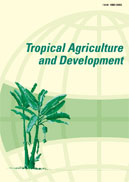Volume 59, Issue 4
Displaying 1-8 of 8 articles from this issue
- |<
- <
- 1
- >
- >|
Original Article
-
2015 Volume 59 Issue 4 Pages 161-169
Published: 2015
Released on J-STAGE: April 02, 2016
Download PDF (746K) -
2015 Volume 59 Issue 4 Pages 170-178
Published: 2015
Released on J-STAGE: April 02, 2016
Download PDF (536K) -
2015 Volume 59 Issue 4 Pages 179-189
Published: 2015
Released on J-STAGE: April 02, 2016
Download PDF (702K) -
2015 Volume 59 Issue 4 Pages 190-198
Published: 2015
Released on J-STAGE: April 02, 2016
Download PDF (535K) -
2015 Volume 59 Issue 4 Pages 199-206
Published: 2015
Released on J-STAGE: April 02, 2016
Download PDF (650K) -
2015 Volume 59 Issue 4 Pages 207-211
Published: 2015
Released on J-STAGE: April 02, 2016
Download PDF (314K) -
2015 Volume 59 Issue 4 Pages 212-220
Published: 2015
Released on J-STAGE: April 02, 2016
Download PDF (1001K)
Short Report
-
2015 Volume 59 Issue 4 Pages 221-223
Published: 2015
Released on J-STAGE: April 02, 2016
Download PDF (272K)
- |<
- <
- 1
- >
- >|
